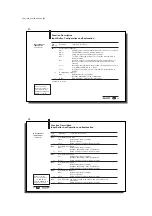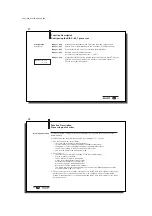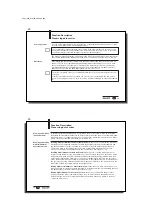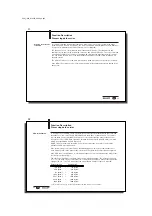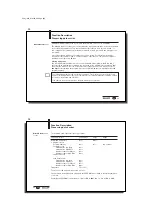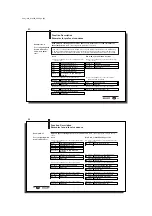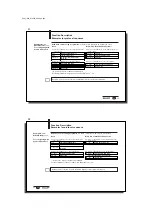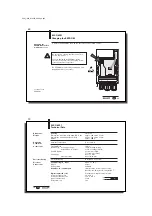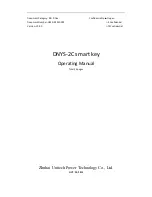
43
deutsch
43
E
Example No. 6
For configuring with
double bit header
and 8-byte buffer
size!
Read 30 bytes starting at data carrier address 10, with read error and simultaneous
data transmission
(data carrier type with 64 byte block size)
:
If an error occurs after data have started to be sent, the AF-Bit is set instead of the AE-Bit along
with the corresponding error number. The error message AF is dominant. It cannot be specified
which data are incorrect. When the AF-BIT is set the job is interrupted and declared to be ended.
4.)
Process subaddresses of the input buffer:
If an error has occurred:
01
Hex
Enter error number
00
Hex
/07
Hex
Set AF-Bit
00
Hex
/07
Hex
Set AA-Bit
01...06
Hex
Enter the first 6 data bytes
00
Hex
/07
Hex
Invert TO-Bit
01...06
Hex
Copy first 6 data bytes
Process subaddress of the output buffer:
00
Hex
/07
Hex
Invert TI-Bit
6.)
Process subaddresses of the input buffer:
BIS C-60_1 Identification System:
2.)
Process subaddresses of the input buffer in the
order shown:
Host:
1.)
Process subaddresses of the output buffer in the
order shown:
3.)
Process subaddress of the output buffer:
01
Hex
Command designator 01
Hex
02
Hex
Start address Low Byte 0A
Hex
03
Hex
Start address High Byte 00
Hex
04
Hex
No. of bytes Low Byte 1E
Hex
05
Hex
No. of bytes High Byte 00
Hex
00
Hex
/07
Hex
Set CT-Bit to 1 (64 Byte block size),
set AV-Bit
01
Hex
Copy error number
Process subaddress of the output buffer:
00
Hex
/07
Hex
Reset AV-Bit
00
Hex
/07
Hex
Reset AA-Bit and AF-Bit
5.)
Process subaddress of the input buffer:
Function Description
Examples for protocol sequence
C60_1-023_819395_0508_en.p65
44
44
E
Example No. 7
For configuring with
double bit header!
Write 16 bytes starting at data carrier address 20
(data carrier type with 32 byte block
size)
:
Host:
1.)
Process subaddresses of the output buffer in the
order shown:
BIS C-60_1 Identification System:
2.)
Process subaddresses of the input buffer in the
order shown:
3.)
Process subaddresses of the output buffer:
4.)
Process subaddresses of the output buffer:
9.)
Process subaddresses of the output buffer:
10.)
Process subaddresses of the input buffer:
5.)
Process subaddresses of the output buffer:
6.)
Process subaddresses of the output buffer:
7.)
Process subaddresses of the output buffer:
8.)
Process subaddresses of the output buffer:
01
Hex
Command designator 02
Hex
02
Hex
/03
Hex
Start address 14
Hex
/ 00
Hex
04
Hex
/05
Hex
No. of bytes 10
Hex
/ 00
Hex
00
Hex
/07
Hex
CT-Bit to 0 (32 Byte block size),
set AV-Bit
00
Hex
/07
Hex
Set AA-Bit, invert TO-Bit
01...06
Hex
Enter the first 6 data bytes
00
Hex
/07
Hex
Invert TI-Bit
01...06
Hex
Copy the first 6 data bytes
Process subaddress of the input buffer:
00
Hex
/07
Hex
Invert TO-Bit
01...06
Hex
Enter the second 6 data bytes
00
Hex
/07
Hex
Invert TI-Bit
01...06
Hex
Copy the second 6 data bytes
Process subaddress of the input buffer:
00
Hex
/07
Hex
Invert TO-Bit
01...04
Hex
Enter the remaining 4 data bytes
00
Hex
/07
Hex
Invert TI-Bit
01...04
Hex
Copy the remaining 4 data bytes
Process subaddress of the input buffer:
00
Hex
/07
Hex
Set AE-Bit
00
Hex
/07
Hex
Reset AV-Bit
00
Hex
/07
Hex
Reset AA-Bit and AE-Bit
Function Description
Examples for protocol sequence





